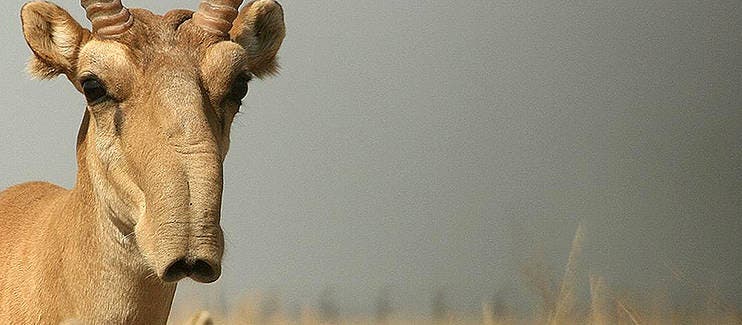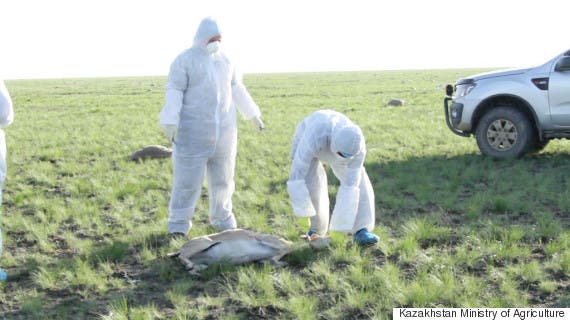Approximately 120,000 critically endangered saiga antelopes were killed by a mysterious disease since mid-May in Kazakhstan, where 90% of the population lives. A third of the endangered saigas died in this sudden lapse that is still leaving veterinarians and researchers in the area scratching their heads. In the past two decades, the long-nosed antelopes went through a number of similar tragedies, both at the hand of disease and over-hunting.
Last month, some 250,000 saiga antelopes roamed the steppes and grasslands of Kazakhstan. Previously, saiga population plunged about 95 per cent in the 1990s, leaving only about 50,000 of the animals alive worldwide. The animals’ horns are used in traditional Chinese medicine and, like in the case of rhinos, the demand caused wide-spread poaching that nearly wiped out the antelopes. Then, a 1984 event killed about 100,000. Just as the saigas were starting to recover, they’ve now been hit by another die-off whose cause has yet to be determined.
Samples collected from the carcasses found bacteria pathogens, Pasteurella and Clostridia, which were singled out as likely causes of death. These bacteria, however, are fatal only when the animals have a weakened immune system. Apparently, the bacteria hasn’t acted alone and some virus or environmental factor (pesticides, for instance) may have joined in an unholy alliance. To add to the puzzle, virtually all infected antelopes die.
“This loss is a huge blow for saiga conservation in Kazakhstan and in the world,” Kazakhstan’s vice agriculture minister Erlan Nysynbaev said in a statement released by the Convention on the Conservation of Migratory Species of Wild Animals, a treaty under the U.N. Environment Programme. “It is very painful to witness this mass mortality.”
Bearing a distinctive bulbous nose, the saiga looks more like a hoofed anteater than an antelope. The nose is flexible and inflatable so helps it to breathe clean air during dusty summers and warm air during cold winters. Typically, the animals herd in groups of 30-40, but when during the mating season they congregate in larger groups. This happens typically in November, but in the summer the herds all join together by the thousands in one of the most impressive massive yearly migrations in the world.
The latest die-off appears to have ended, and there is hope for the endangered antelope’s numbers. After all, the saigas have been through worse times.
“Saiga antelopes often have twins and populations are able to rebound quickly,” CMS executive secretary Bradnee Chambers said. “Our hope is that if we can control what is driving these mass mortality events as well as tackle the No.1 threat to saigas – wildlife crime and poaching – populations will be able to recover.”
“The loss of such a large proportion of the saiga population in such a short time is really sad,” said Noah Greenwald, the Center for Biological Diversity’s endangered species director.
“Unfortunately mass die-offs of wildlife from previously unseen diseases is becoming all too familiar,” he said, adding that more than 7 million bats in North America have died of white-nose syndrome in the last decade.
“With international trade, microorganisms are passing through the world’s ports at an unprecedented rate,” Mr Greenwald added. “Combined with diseases from livestock, one has to wonder if this is how the saiga got sick.”










